Ford began its off-road SUV experience in World War II, when they built GP (General Purpose) vehicles for Allied forces, and gained further GP experience building the troop utility vehicle, MUTT in the 1950s and ’60s. Following WWII, GIs returning home sought and bought familiar Army surplus GPs for work and outdoor play, but they did not provide the civilian comfort Ford was marketing. In the early 1960s, Ford began developing a more refined, spacious, yet durable off-road vehicle to meet this need – Bronco, which it referred to as a “sports-utility vehicle,” the first SUV developed by the company and first American manufacturer to use the term.
The original Bronco was nicknamed G.O.A.T. by Donald Frey, the Ford vice-president who helped initiate both Mustang and Bronco nameplates, He challenged engineering teams to deliver “go anywhere roadability.” The G.O.A.T. terminology was indicative of the desire to develop a “Goes Over All Terrain” vehicle. However, since the public already nicknamed the Pontiac GTO “GOAT,” and the Dodge Ram insignia was a mountain goat (ram), that terminology was eliminated. Not a company to forget, Ford has brought back Bronco for 2021 and has included a “G.O.A.T.” 4x4 system with an exclusive drive mode set-up, and unique Bronco-variant architectures with class-leading levels of capability and suspension technology. Ford markets the arrangement as a “go over any terrain” system.
The earliest sketches for the Bronco show the now-familiar box-shaped vehicle with the recognizable round headlights and two-door layout. The vehicle underwent constant revisions as its features were molded, and Frey described it as “neither a conventional car nor a truck, but as a vehicle which combines the best of both worlds. It can serve as a family sedan, as sports roadster, a snowplow, or as a farm or civil defense vehicle. It has been designed to go nearly anywhere and do nearly anything.”
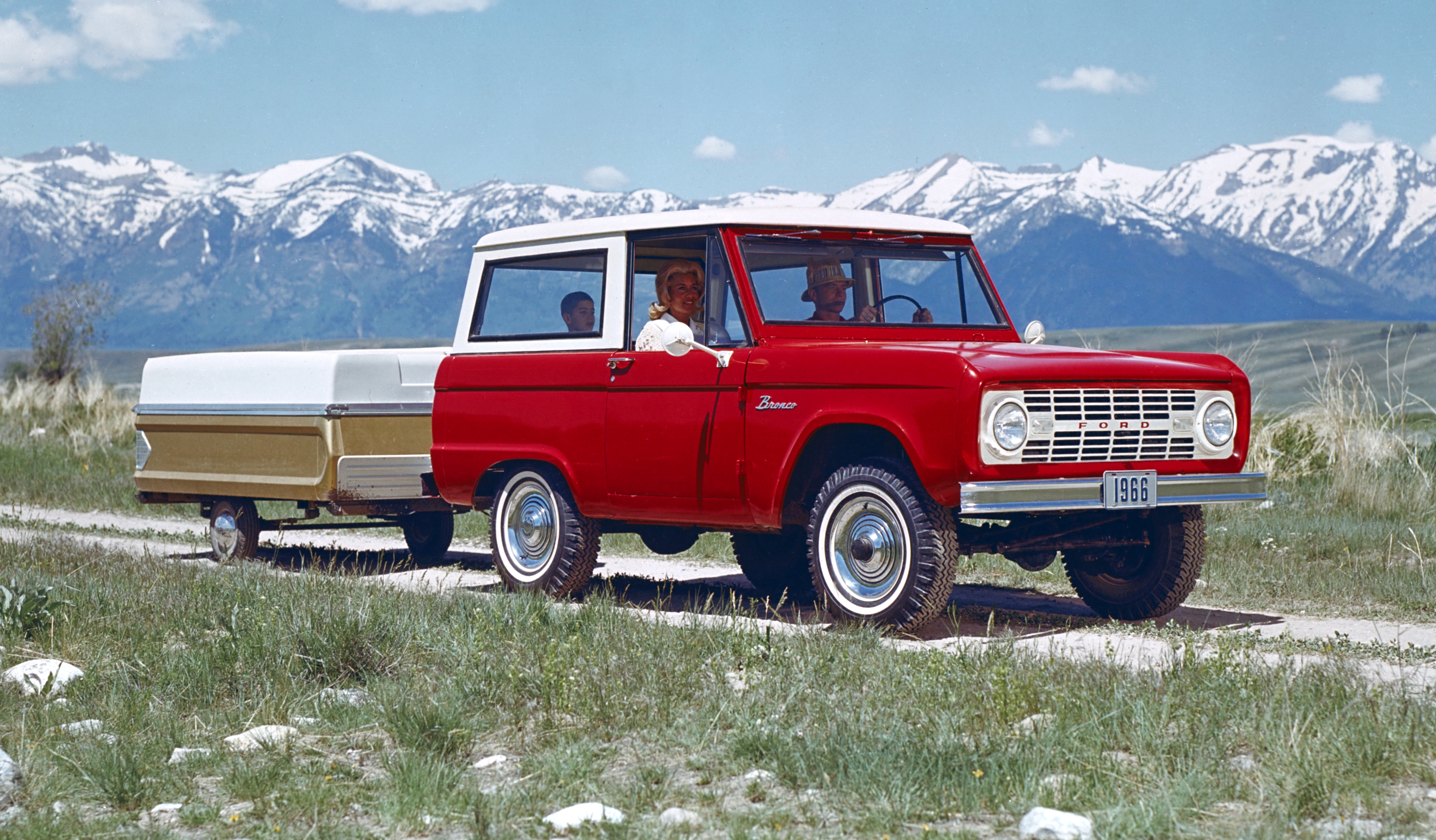 Brought out for the 1966 model year, Bronco was offered in three body styles: the Roadster (open-air model,) Sports Utility (with pickup bed,) and Wagon (two doors, tailgate, full top.) The Roadster was the most basic and least expensive of the three with doors and roof as options. The Sports Utility featured a short top, seating for two or three with a bench seat and a pickup style bed. Over time, the Sports Utility was known as the “half-cab.” The most popular model was the Wagon with a full-length hardtop roof and seating for up to five people with rear bench seat. While there were a large number of optional packages, all three models came with standard four-wheel drive, a 3-speed manual transmission, and a 105-horsepower, 170-cubic-inch, six-cylinder engine. On March 2, 1966, the 289-V-8 was offered as an upgrade and the Bronco’s horsepower and torque rating increased to the top of the sports-utility field.
Brought out for the 1966 model year, Bronco was offered in three body styles: the Roadster (open-air model,) Sports Utility (with pickup bed,) and Wagon (two doors, tailgate, full top.) The Roadster was the most basic and least expensive of the three with doors and roof as options. The Sports Utility featured a short top, seating for two or three with a bench seat and a pickup style bed. Over time, the Sports Utility was known as the “half-cab.” The most popular model was the Wagon with a full-length hardtop roof and seating for up to five people with rear bench seat. While there were a large number of optional packages, all three models came with standard four-wheel drive, a 3-speed manual transmission, and a 105-horsepower, 170-cubic-inch, six-cylinder engine. On March 2, 1966, the 289-V-8 was offered as an upgrade and the Bronco’s horsepower and torque rating increased to the top of the sports-utility field.
Five generations of the Bronco were manufactured and sold from the 1966 to 1996 model years, with a sixth generation of the model line brought back for the 2021 model year. The 1966 Bronco joined Mustang as the second Pony in the Blue Oval stable, and originally competed against Jeep CJ-5 and International Harvester Scout.
The public quickly took to Bronco as a vehicle that could take you over any terrain and get you wherever you wanted to go in comfort. A personal case in point: in the late 1960s, my brother-in-law and I went backpacking and trout fishing in the High Sierras of California. Before we backpacked up, we drove my bro-in-law’s 1966 Red-and-White Bronco off-road, over rocks, through tightly situated trees, up steep access and across very rough terrain, as far as we could move on four wheels. We parked it and set off on our hike, and after rock-climbing, river crossing and tree skirting, we came upon an old-timer driving HIS Bronco across bigger rocks, steeper inclines and some flowing water. When I asked him how the heck he got his vehicle up here, he said, “A Bronco can go anywhere, fella.” He shook his head at us and Bronco’d on.
While upgrades were made to the Bronco after its introduction in 1966, the vehicle remained essentially unchanged until 1973, when power steering and automatic transmission were introduced as part of a “Bronco Revolution.” The 302 V-8 option came with the SelectShift Cruise-O-Matic 3-speed transmission, and a new 200-cubic-inch six replaced the 170-cubic-inch six that had been standard since the introduction.
 In 1978, Bronco was entirely redesigned as Ford enlarged the Bronco as a short-wheelbase version of the F-Series pickup truck, Now a full-size SUV, Bronco set out to compete against larger sports-utes, and it offered two different V-8 engines and for the first time did not have a V-6 option. Additionally, the interior was completely redone as well, offering more space and more comfortable bucket seats in the front and, with a new recessed footwell, and much more legroom for the passengers in the rear seats. The new model also had two first-time features -- air conditioning and AM/FM radios offered as options.
In 1978, Bronco was entirely redesigned as Ford enlarged the Bronco as a short-wheelbase version of the F-Series pickup truck, Now a full-size SUV, Bronco set out to compete against larger sports-utes, and it offered two different V-8 engines and for the first time did not have a V-6 option. Additionally, the interior was completely redone as well, offering more space and more comfortable bucket seats in the front and, with a new recessed footwell, and much more legroom for the passengers in the rear seats. The new model also had two first-time features -- air conditioning and AM/FM radios offered as options.
The 1980 to 1986 third-generation Bronco became smaller, lighter, and more aerodynamic and fuel-efficient, based on the shorter F-150 platform featuring both V-6 and V-8 engines, coinciding with rising gas prices and attention to fuel economy. The third-Gen Bronco was the first to offer independent front suspension replacing the monobeam front end. A revolutionary front-wheel-drive independent front suspension and new frame were well received by the buying public and automotive press.
 The Bronco II was introduced in March 1983 as a 1984 model. The smaller brother to the Bronco, the Bronco II was built through 1990 and was based on the smaller Ranger platform. Popular options included an Eddie Bauer trim package. Advertising touted the rugged toughness of the Bronco and Eddie Bauer gear. After 1990, the Bronco II was discontinued as the new Ford Explorer was introduced in that segment.
The Bronco II was introduced in March 1983 as a 1984 model. The smaller brother to the Bronco, the Bronco II was built through 1990 and was based on the smaller Ranger platform. Popular options included an Eddie Bauer trim package. Advertising touted the rugged toughness of the Bronco and Eddie Bauer gear. After 1990, the Bronco II was discontinued as the new Ford Explorer was introduced in that segment.
 The 1987 to 1991 fourth-generation Bronco received an aerodynamically redesigned front end and a variety of modernized features. This generation saw the introduction of electronic fuel injection, rear anti-lock brakes and, after 1988, 5-speed manual transmissions. Custom trim packages included a special 25th anniversary edition with a special Currant Red exterior and charcoal leather seating.
The 1987 to 1991 fourth-generation Bronco received an aerodynamically redesigned front end and a variety of modernized features. This generation saw the introduction of electronic fuel injection, rear anti-lock brakes and, after 1988, 5-speed manual transmissions. Custom trim packages included a special 25th anniversary edition with a special Currant Red exterior and charcoal leather seating.
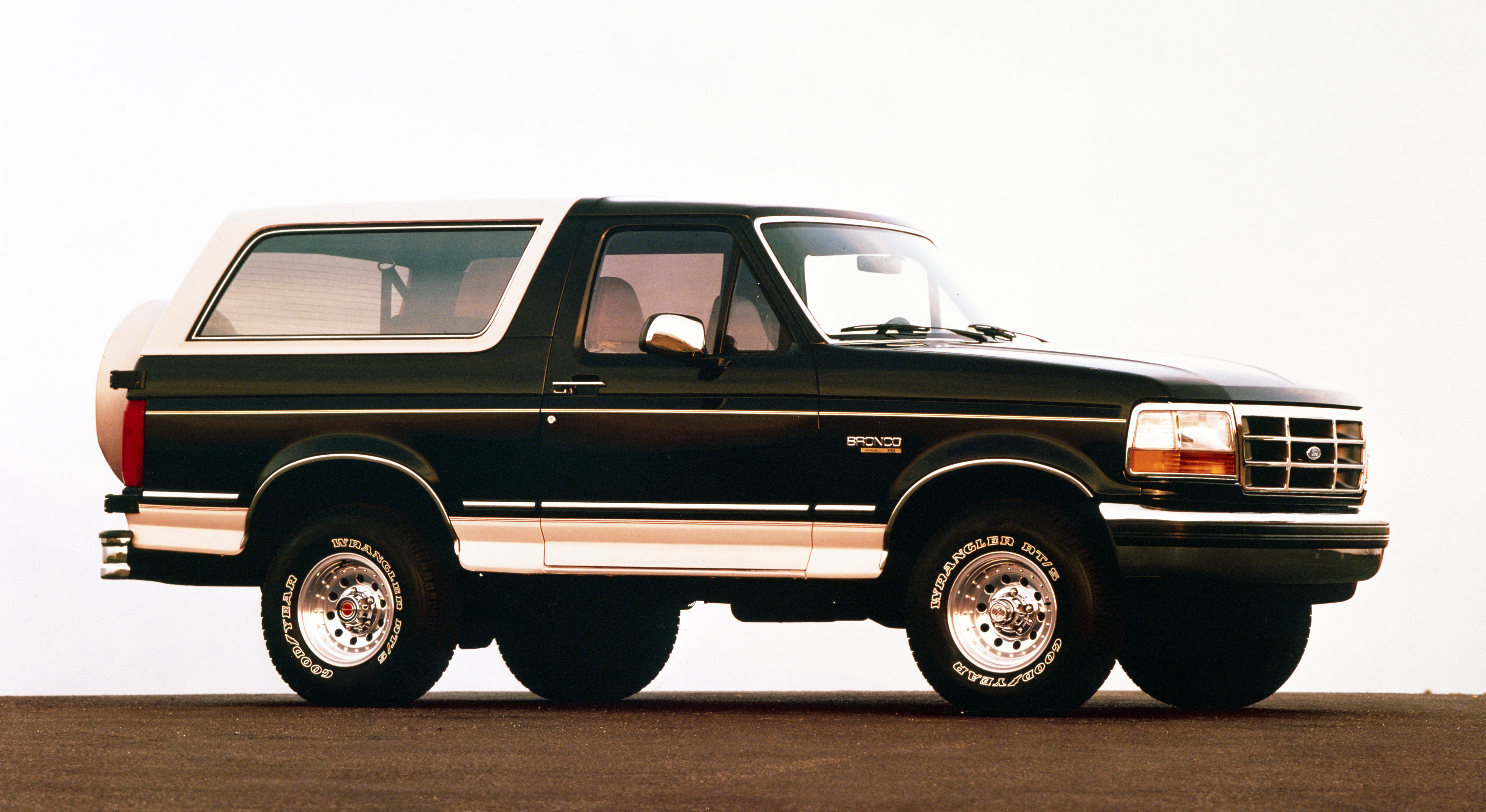 The final Bronco generation between 1992 and 1996 included minimal body and styling tweaks, but showed enhanced safety and utility features. Ford advertised the 1992 Bronco as the “Smartest Bronco ever.” This generation was the first to feature driver’s side airbags, three point seat belt systems and, by 1994, an air conditioning system that used a refrigerant that was free of chlorofluorocarbons. It was a 1993 Bronco that O.J. Simpson was a passenger in during his two-hour slow-speed chase in June, 1994.
The final Bronco generation between 1992 and 1996 included minimal body and styling tweaks, but showed enhanced safety and utility features. Ford advertised the 1992 Bronco as the “Smartest Bronco ever.” This generation was the first to feature driver’s side airbags, three point seat belt systems and, by 1994, an air conditioning system that used a refrigerant that was free of chlorofluorocarbons. It was a 1993 Bronco that O.J. Simpson was a passenger in during his two-hour slow-speed chase in June, 1994.
Dormant for a quarter-century, Bronco is back for 2021, with an all-new Bronco outdoor brand of Built Wild™ SUVs. The current Bronco family includes a two-door, first-ever Bronco four-door model and all-new rugged, small SUV, Bronco Sport – the only domestic brand of SUVs with standard 4x4.
Race-bred EcoBoost® engines plus class-exclusive 7-speed manual and available 10-speed automatic transmissions give the all-new Bronco the optimal combination of power, torque and gear ranges to perform in a wide variety of terrains and uses. The available 2.7-liter EcoBoost engine delivers 310 horsepower and 400 lb.-ft. of torque, while the 2.3-liter EcoBoost provides 270 hp and 310 lb.-ft. The 2021 Bronco is touted to provide on-road comfort, off-road and rock climbing capability. Purpose-built and ready for action, Bronco continues its heritage as a Goes Over Any Terrain beast.
From its birth, Bronco has held a special place in popular culture and has been featured in more than 1,200 films and 200 songs. Furthermore, since Ford ended its first production run in 1996, Bronco SUVs have gained a following with collectors and enthusiasts. The reemergence of Bronco has helped jump vintage valuations, with premium auction results showing a doubling of Bronco sales prices over the past three years from $39,763 to $74,820 with the 1966-77 Broncos gaining some 75.8 percent -- among the highest vehicle price increases of all collectible SUVs over the past three years.
With the new Bronco available to consumers, expect to see some at the Carlisle Ford Nationals presented by Meguiar's this summer, June 4-6 at the Carlisle PA Fairgrounds. In addition to what will be on the National Parts Depot Showfield, Ford will likely have some as part of their display too. Finally, Ford Nationals weekend spotlights all things Stroppe! From the Stroppe Baja Broncos to the Lincoln and Mercury Stroppe racecars of old, a nice Stroppe themed mix will be on display inside and outside of Building T. There are even some display specific surprises planned. Stroppe owners are encouraged to be part of this display by applying for consideration at CarlisleFeatures.com.
Mike Blake, former editor of KIT CAR magazine, joined Carlisle Events as senior automotive journalist in 2004. He's been a "car guy" since the 1960s and has been writing professionally for about 30 years.

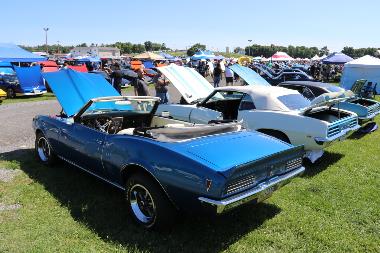

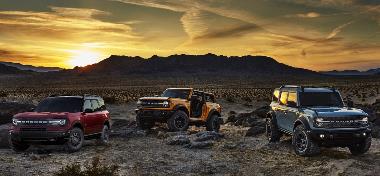
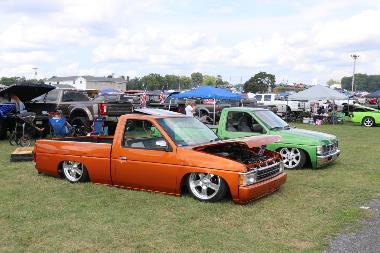
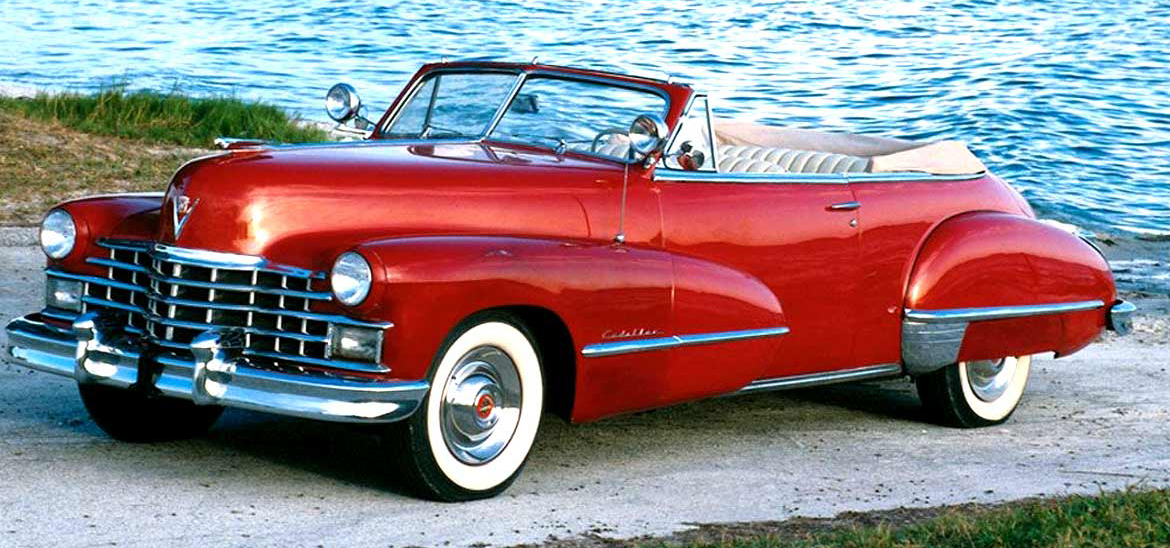 Sometimes the divide even comes from different generations of the same vehicle as with early- and late-model Corvettes, original and more recent Camaros and the Old School vs. New School evolution of Cadillac. Often, there is competitive debate within the same badge as with Pontiac’s Bonneville vs. Firebird or Firebird vs. GTO, Oldsmobile’s 88 vs. 98, or Chevy’s Nova vs. Chevelle (even though Chevelle was a midsize and larger than Nova).
Sometimes the divide even comes from different generations of the same vehicle as with early- and late-model Corvettes, original and more recent Camaros and the Old School vs. New School evolution of Cadillac. Often, there is competitive debate within the same badge as with Pontiac’s Bonneville vs. Firebird or Firebird vs. GTO, Oldsmobile’s 88 vs. 98, or Chevy’s Nova vs. Chevelle (even though Chevelle was a midsize and larger than Nova). 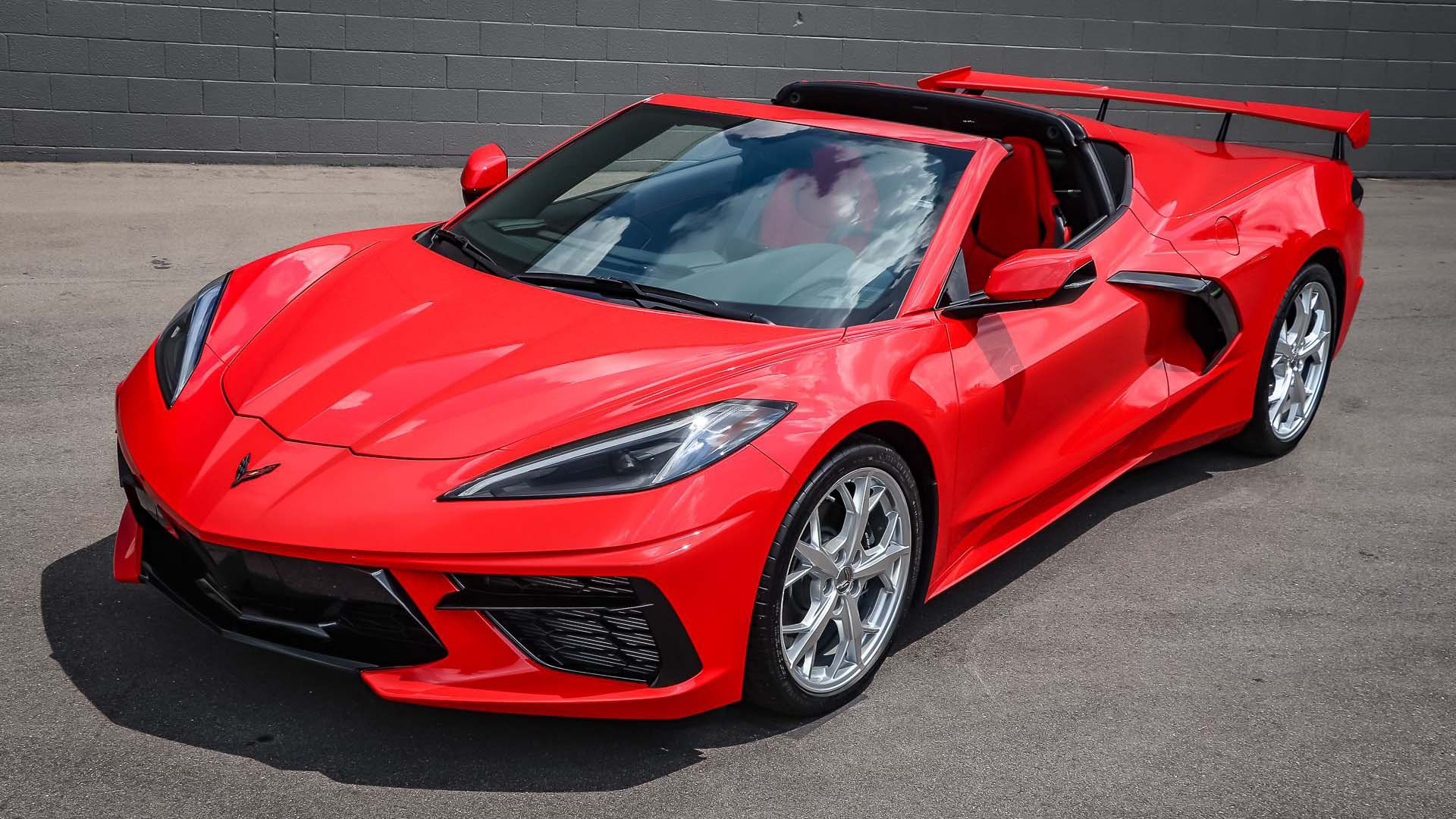 There are exceptions. Corvette seems to have earned niche approval among most family members and is largely held in esteem like the favorite uncle or aunt that all the kids love. And Uncle Cadillac has evolved into a luxury sedan with as much power as his nephew Vette, and is revered by many family members for his history.
There are exceptions. Corvette seems to have earned niche approval among most family members and is largely held in esteem like the favorite uncle or aunt that all the kids love. And Uncle Cadillac has evolved into a luxury sedan with as much power as his nephew Vette, and is revered by many family members for his history.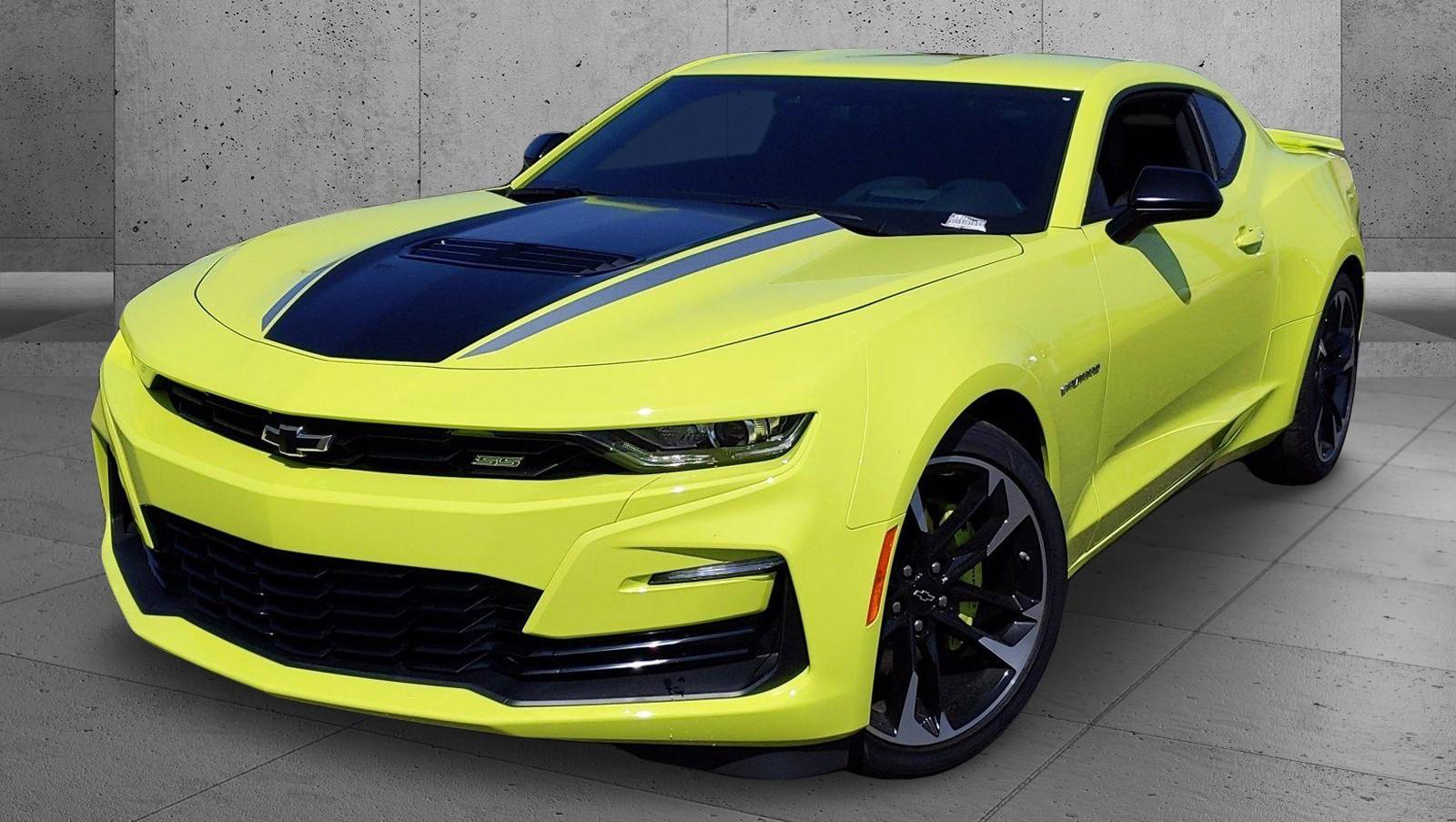 In the case of Camaro vs. Firebird, the competitive fires burns logically, as both shared the same platform and were big players in The Pony Car Wars starting in 1967. With similar styling, one difference between the two cars was under the hood, and Firebird was marketed as an upmarket version of the Camaro, while Camaro became “the people’ car.” And both won at the racetrack.
In the case of Camaro vs. Firebird, the competitive fires burns logically, as both shared the same platform and were big players in The Pony Car Wars starting in 1967. With similar styling, one difference between the two cars was under the hood, and Firebird was marketed as an upmarket version of the Camaro, while Camaro became “the people’ car.” And both won at the racetrack. 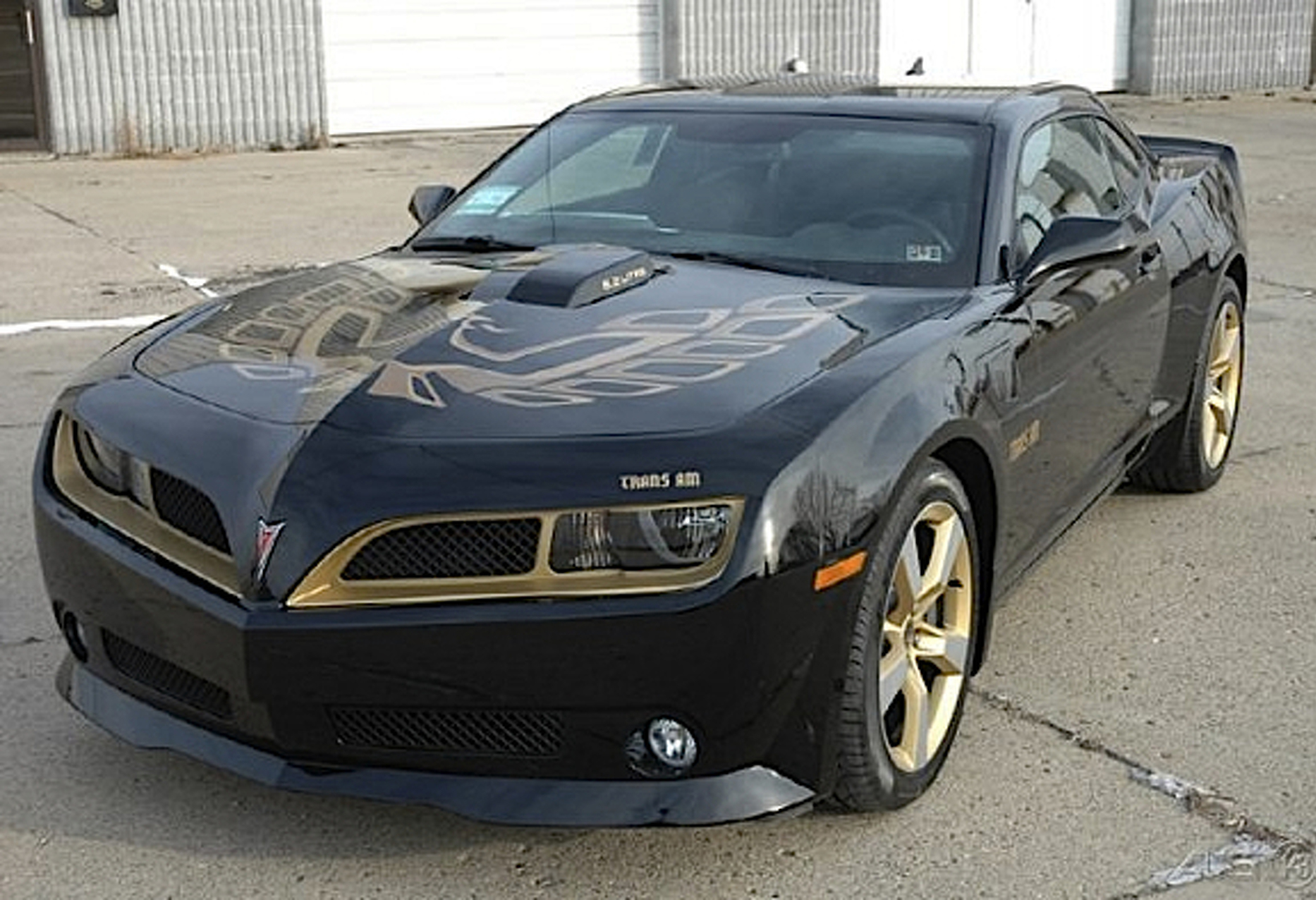
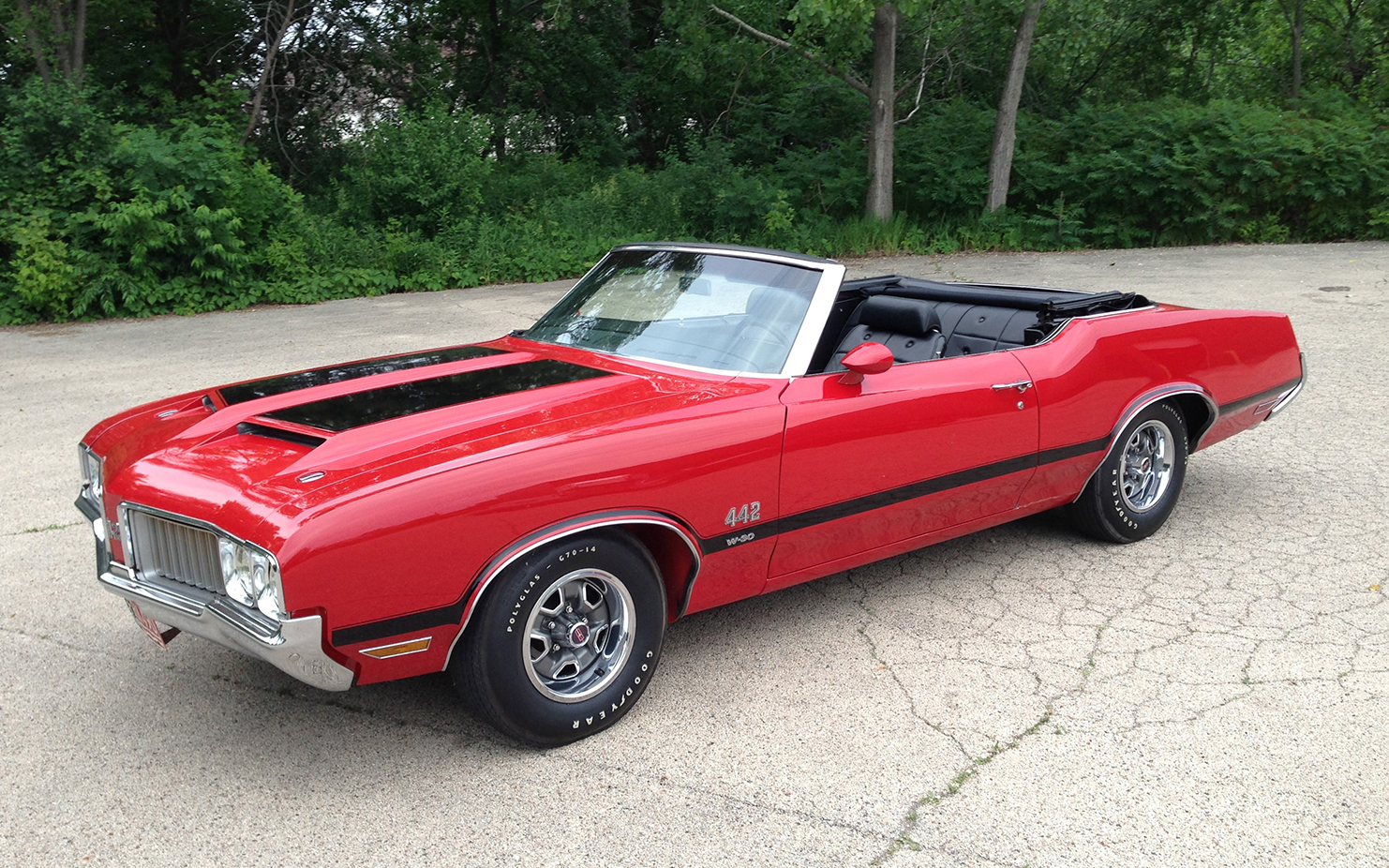
 Brought out for the 1966 model year, Bronco was offered in three body styles: the Roadster (open-air model,) Sports Utility (with pickup bed,) and Wagon (two doors, tailgate, full top.) The Roadster was the most basic and least expensive of the three with doors and roof as options. The Sports Utility featured a short top, seating for two or three with a bench seat and a pickup style bed. Over time, the Sports Utility was known as the “half-cab.” The most popular model was the Wagon with a full-length hardtop roof and seating for up to five people with rear bench seat. While there were a large number of optional packages, all three models came with standard four-wheel drive, a 3-speed manual transmission, and a 105-horsepower, 170-cubic-inch, six-cylinder engine. On March 2, 1966, the 289-V-8 was offered as an upgrade and the Bronco’s horsepower and torque rating increased to the top of the sports-utility field.
Brought out for the 1966 model year, Bronco was offered in three body styles: the Roadster (open-air model,) Sports Utility (with pickup bed,) and Wagon (two doors, tailgate, full top.) The Roadster was the most basic and least expensive of the three with doors and roof as options. The Sports Utility featured a short top, seating for two or three with a bench seat and a pickup style bed. Over time, the Sports Utility was known as the “half-cab.” The most popular model was the Wagon with a full-length hardtop roof and seating for up to five people with rear bench seat. While there were a large number of optional packages, all three models came with standard four-wheel drive, a 3-speed manual transmission, and a 105-horsepower, 170-cubic-inch, six-cylinder engine. On March 2, 1966, the 289-V-8 was offered as an upgrade and the Bronco’s horsepower and torque rating increased to the top of the sports-utility field. In 1978, Bronco was entirely redesigned as Ford enlarged the Bronco as a short-wheelbase version of the F-Series pickup truck, Now a full-size SUV, Bronco set out to compete against larger sports-utes, and it offered two different V-8 engines and for the first time did not have a V-6 option. Additionally, the interior was completely redone as well, offering more space and more comfortable bucket seats in the front and, with a new recessed footwell, and much more legroom for the passengers in the rear seats. The new model also had two first-time features -- air conditioning and AM/FM radios offered as options.
In 1978, Bronco was entirely redesigned as Ford enlarged the Bronco as a short-wheelbase version of the F-Series pickup truck, Now a full-size SUV, Bronco set out to compete against larger sports-utes, and it offered two different V-8 engines and for the first time did not have a V-6 option. Additionally, the interior was completely redone as well, offering more space and more comfortable bucket seats in the front and, with a new recessed footwell, and much more legroom for the passengers in the rear seats. The new model also had two first-time features -- air conditioning and AM/FM radios offered as options.  The Bronco II was introduced in March 1983 as a 1984 model. The smaller brother to the Bronco, the Bronco II was built through 1990 and was based on the smaller Ranger platform. Popular options included an Eddie Bauer trim package. Advertising touted the rugged toughness of the Bronco and Eddie Bauer gear. After 1990, the Bronco II was discontinued as the new Ford Explorer was introduced in that segment.
The Bronco II was introduced in March 1983 as a 1984 model. The smaller brother to the Bronco, the Bronco II was built through 1990 and was based on the smaller Ranger platform. Popular options included an Eddie Bauer trim package. Advertising touted the rugged toughness of the Bronco and Eddie Bauer gear. After 1990, the Bronco II was discontinued as the new Ford Explorer was introduced in that segment. The 1987 to 1991 fourth-generation Bronco received an aerodynamically redesigned front end and a variety of modernized features. This generation saw the introduction of electronic fuel injection, rear anti-lock brakes and, after 1988, 5-speed manual transmissions. Custom trim packages included a special 25th anniversary edition with a special Currant Red exterior and charcoal leather seating.
The 1987 to 1991 fourth-generation Bronco received an aerodynamically redesigned front end and a variety of modernized features. This generation saw the introduction of electronic fuel injection, rear anti-lock brakes and, after 1988, 5-speed manual transmissions. Custom trim packages included a special 25th anniversary edition with a special Currant Red exterior and charcoal leather seating.  The final Bronco generation between 1992 and 1996 included minimal body and styling tweaks, but showed enhanced safety and utility features. Ford advertised the 1992 Bronco as the “Smartest Bronco ever.” This generation was the first to feature driver’s side airbags, three point seat belt systems and, by 1994, an air conditioning system that used a refrigerant that was free of chlorofluorocarbons. It was a 1993 Bronco that O.J. Simpson was a passenger in during his two-hour slow-speed chase in June, 1994.
The final Bronco generation between 1992 and 1996 included minimal body and styling tweaks, but showed enhanced safety and utility features. Ford advertised the 1992 Bronco as the “Smartest Bronco ever.” This generation was the first to feature driver’s side airbags, three point seat belt systems and, by 1994, an air conditioning system that used a refrigerant that was free of chlorofluorocarbons. It was a 1993 Bronco that O.J. Simpson was a passenger in during his two-hour slow-speed chase in June, 1994.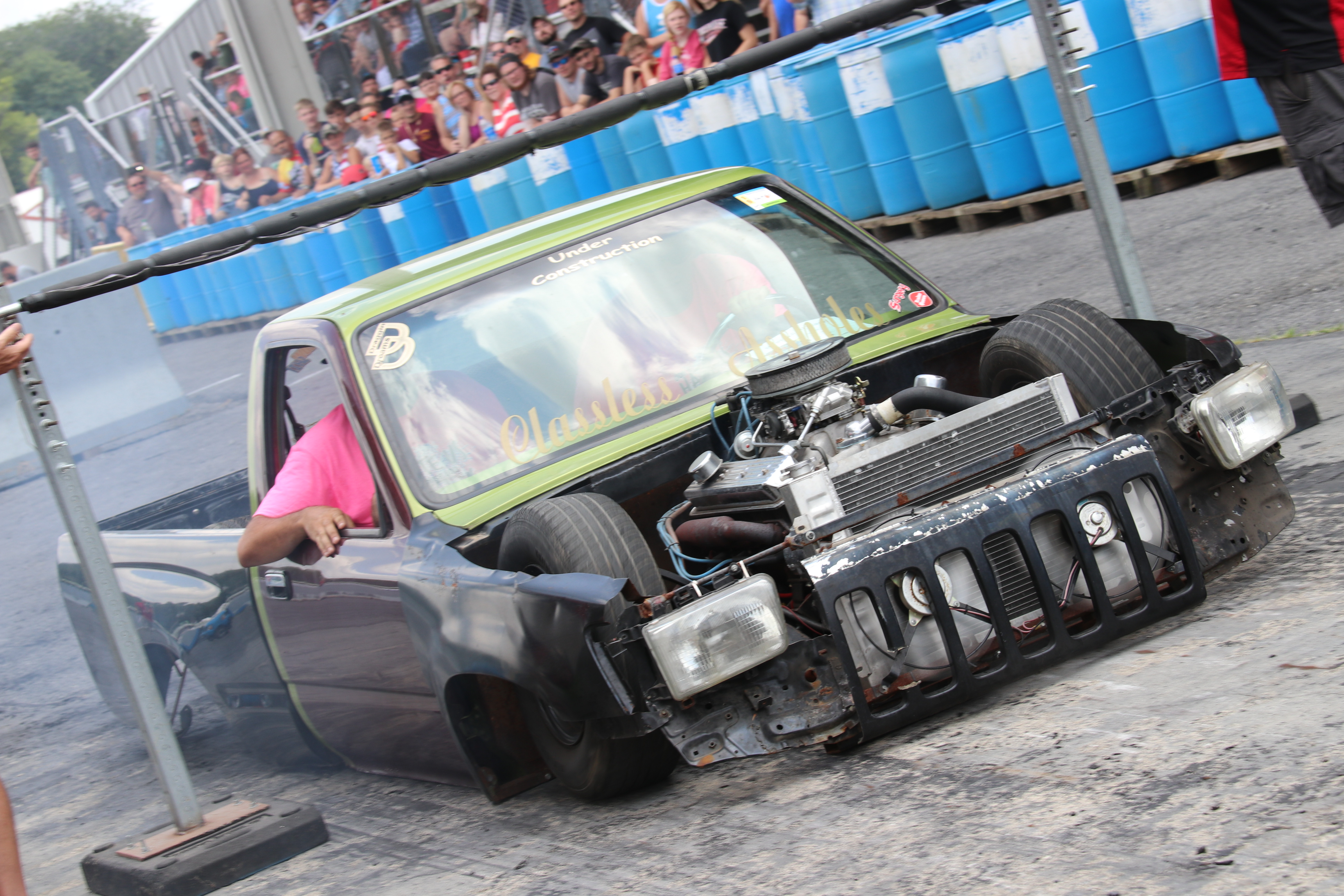 This special show within a show of lowered and mini trucks will be positioned just inside of Gate 3, the main entrance to the grounds near Carlisle Events offices to the north of the Gate. More than ten clubs will be represented in this area to include new and old friends of the Carlisle Truck Nationals. In addition to this showing for low trucks, there will be additional competitions and activities for the low truck and all truck enthusiasts to enjoy. While at the show this year, look for a low truck limbo, coolest and largest club honors, drop and drag, a skating parade, dyno and more.
This special show within a show of lowered and mini trucks will be positioned just inside of Gate 3, the main entrance to the grounds near Carlisle Events offices to the north of the Gate. More than ten clubs will be represented in this area to include new and old friends of the Carlisle Truck Nationals. In addition to this showing for low trucks, there will be additional competitions and activities for the low truck and all truck enthusiasts to enjoy. While at the show this year, look for a low truck limbo, coolest and largest club honors, drop and drag, a skating parade, dyno and more. 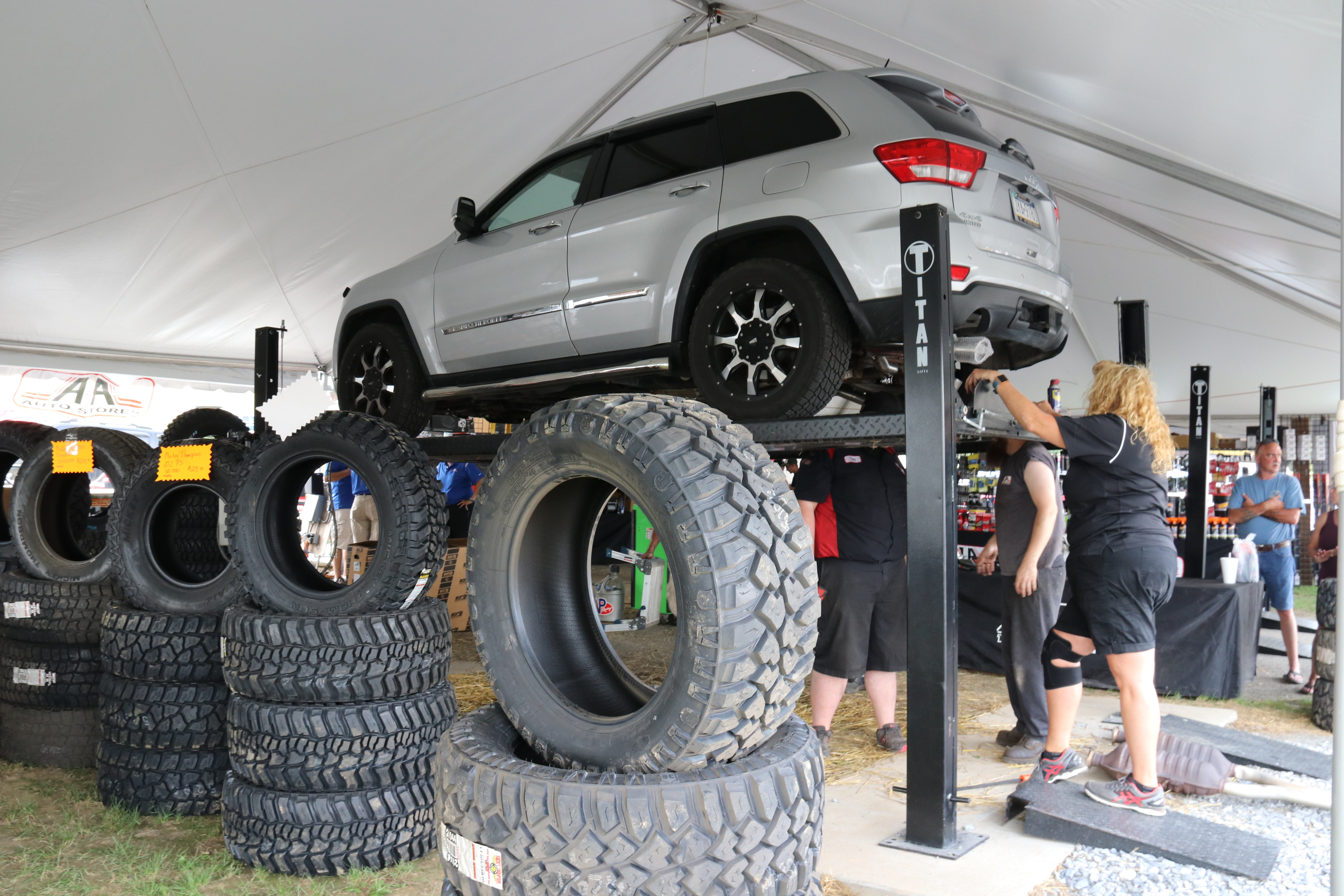 For truck lovers looking to get upgrades while at the event, A&A Auto Stores not only presents the Carlisle Truck Nationals, but also offers in-person installations, while American Force Wheels, the Official Wheel of the Carlisle Truck Nationals brings a mixed bag of size and color options for trucks of all sizes backdropped on some incredible truck builds.
For truck lovers looking to get upgrades while at the event, A&A Auto Stores not only presents the Carlisle Truck Nationals, but also offers in-person installations, while American Force Wheels, the Official Wheel of the Carlisle Truck Nationals brings a mixed bag of size and color options for trucks of all sizes backdropped on some incredible truck builds.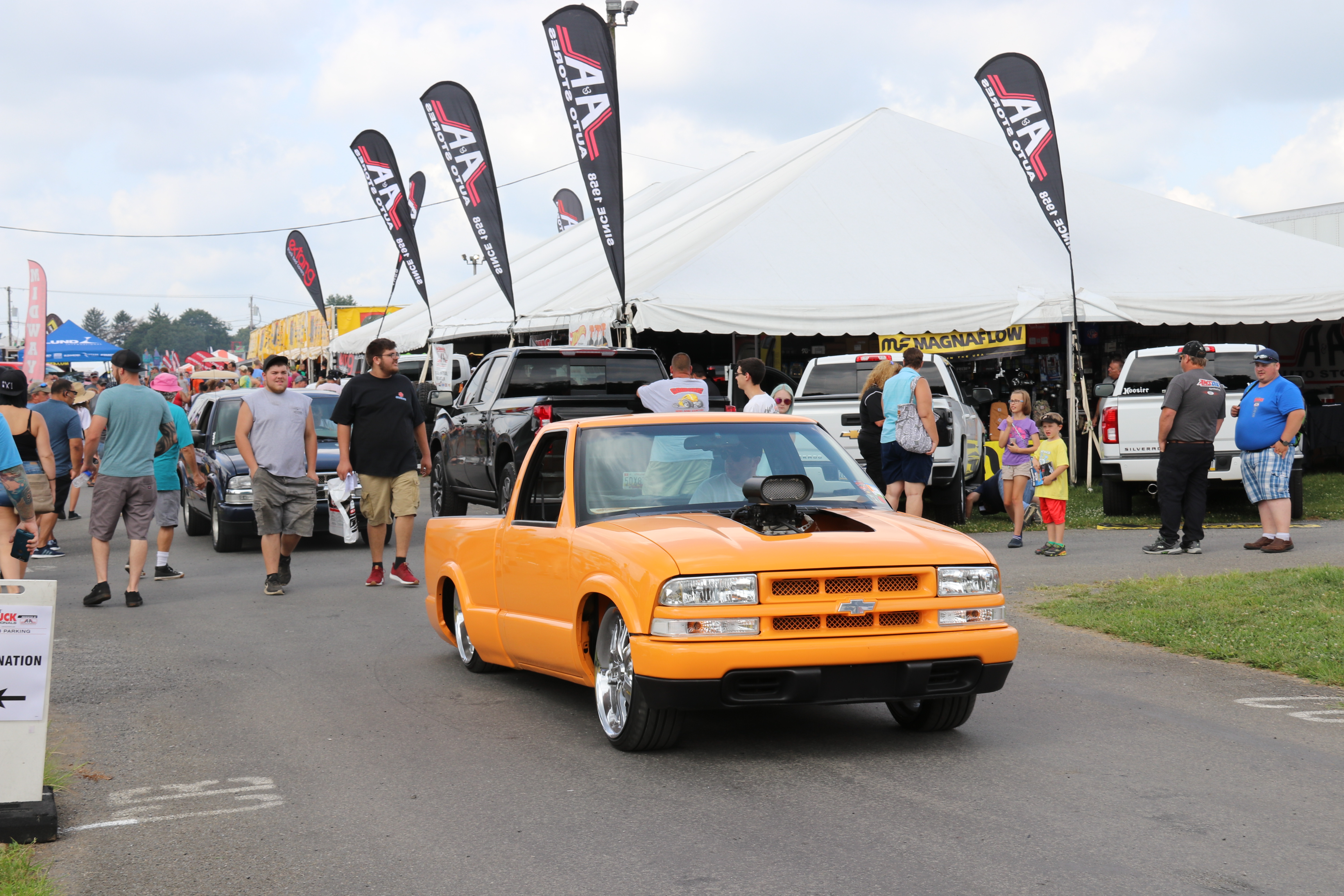 So…while there are many great trucks and features that guests of all ages have come to know and love, 2021 will shine a new light on the lowered truck hobby and you’re invited!
So…while there are many great trucks and features that guests of all ages have come to know and love, 2021 will shine a new light on the lowered truck hobby and you’re invited!







